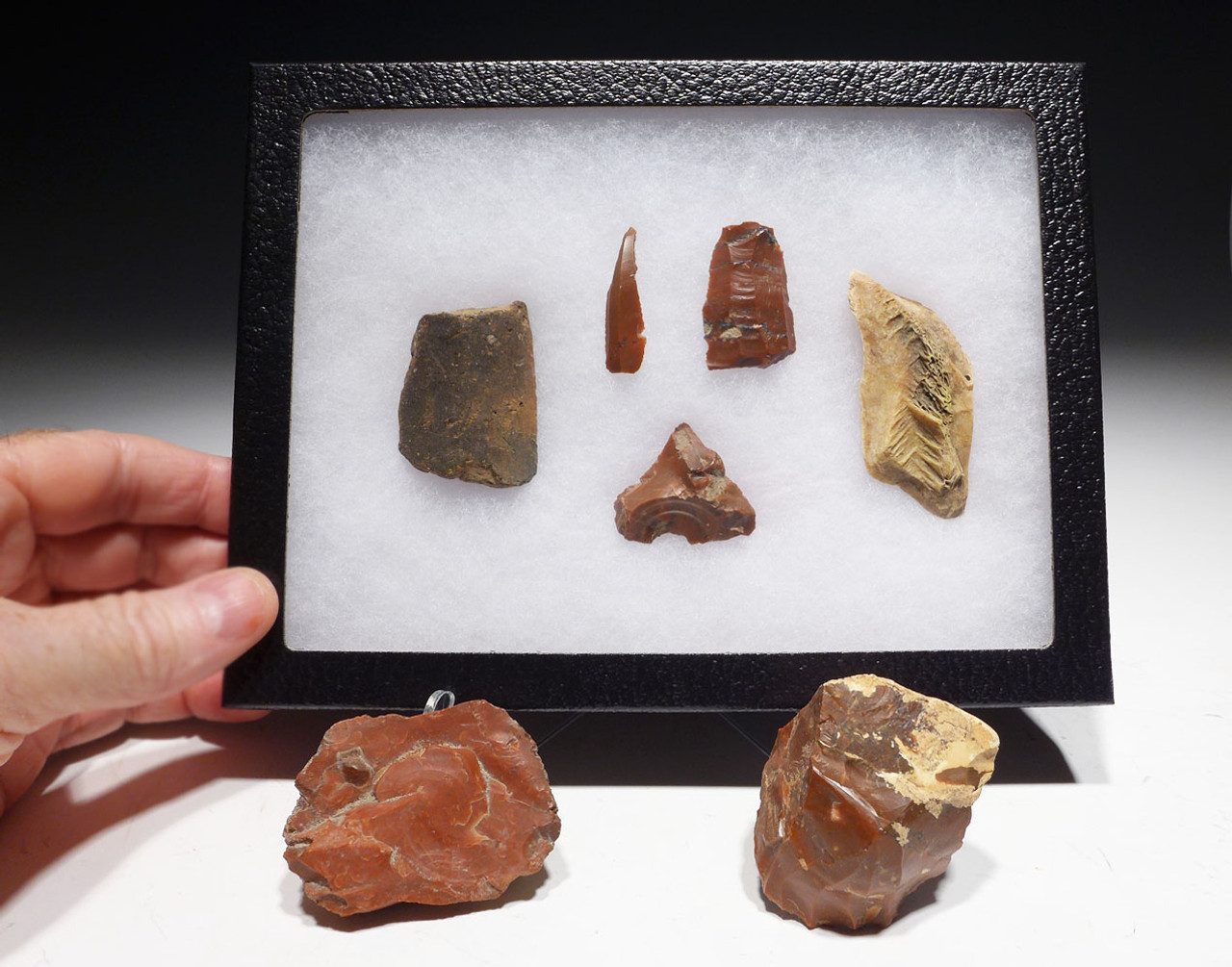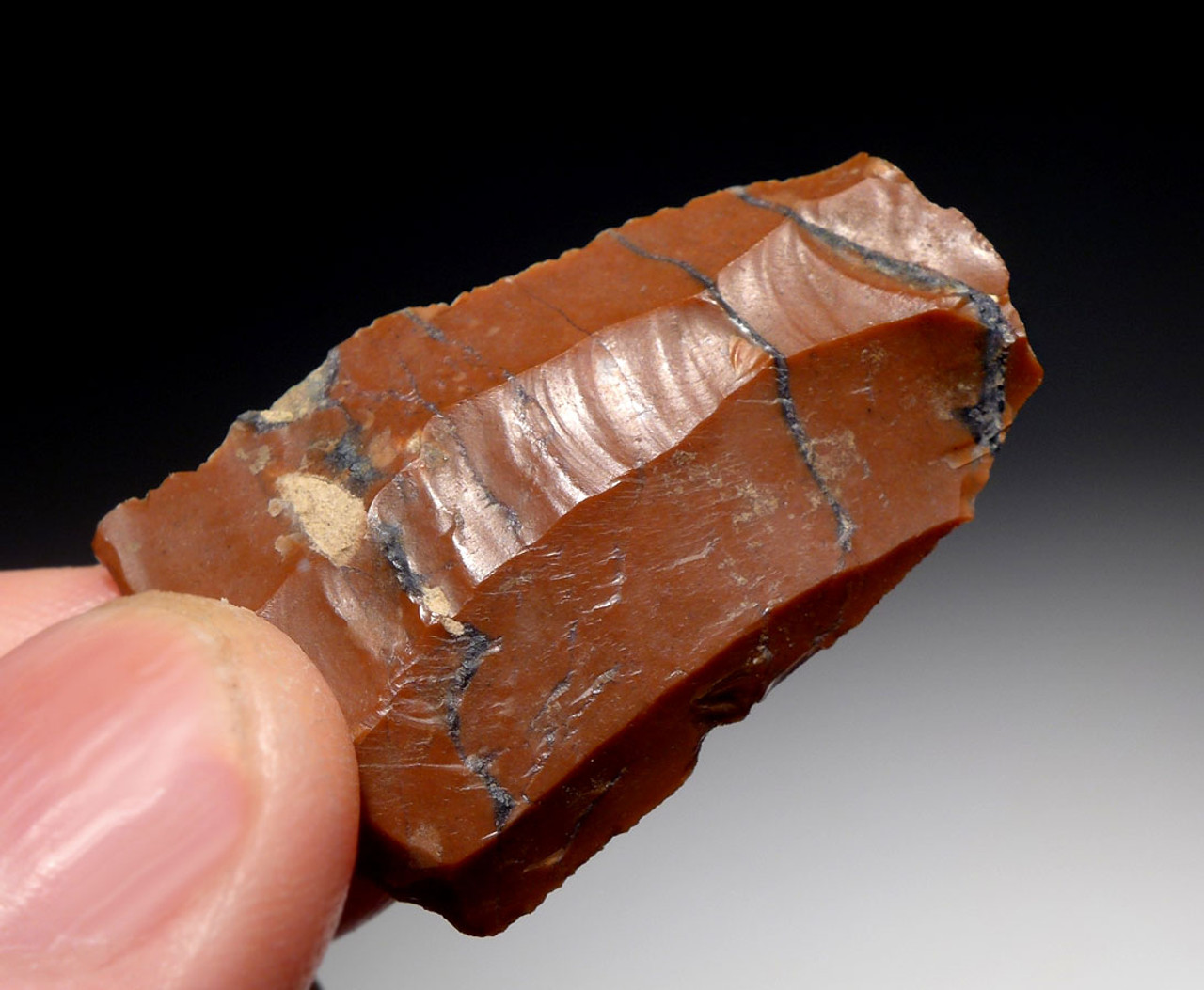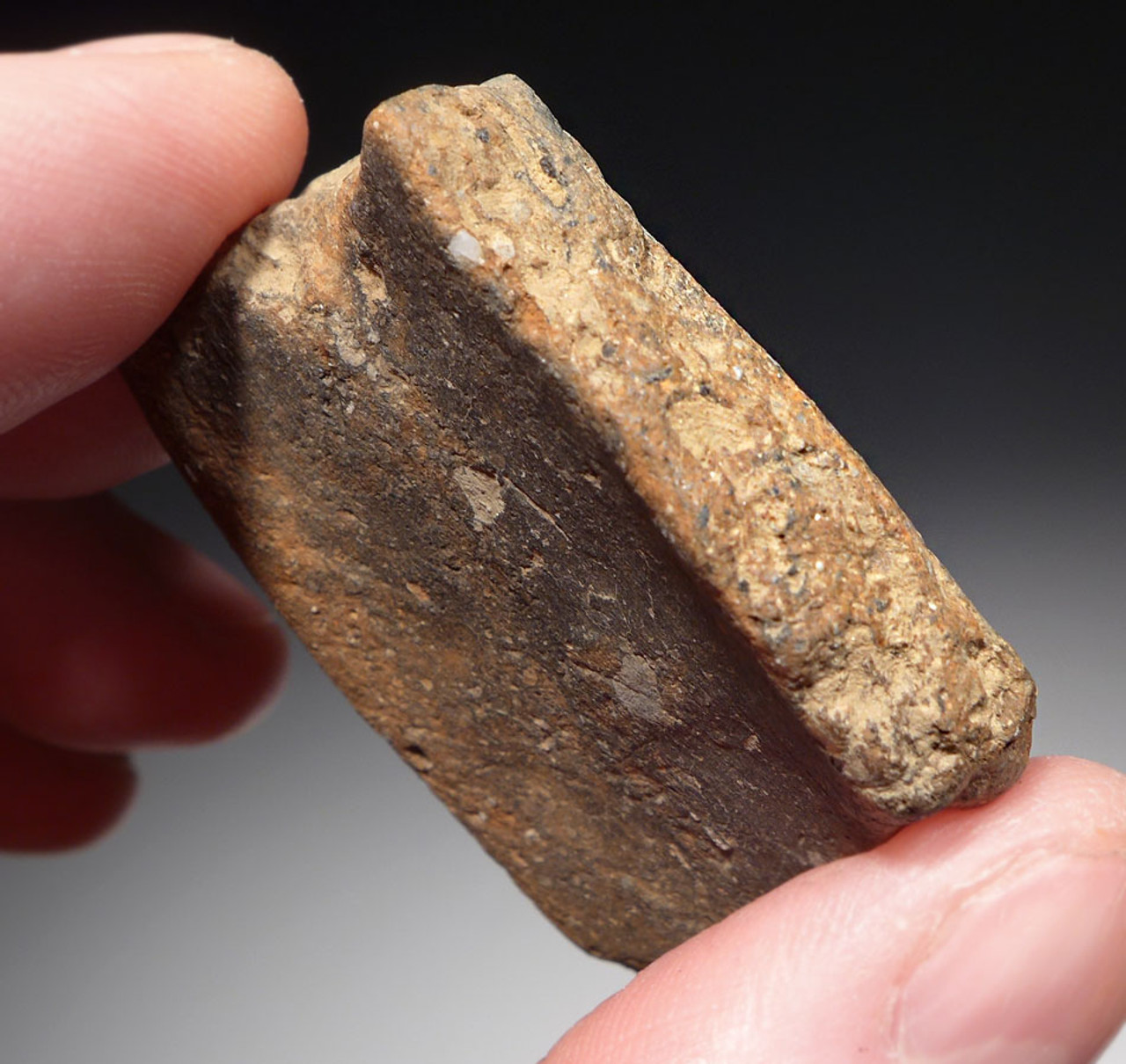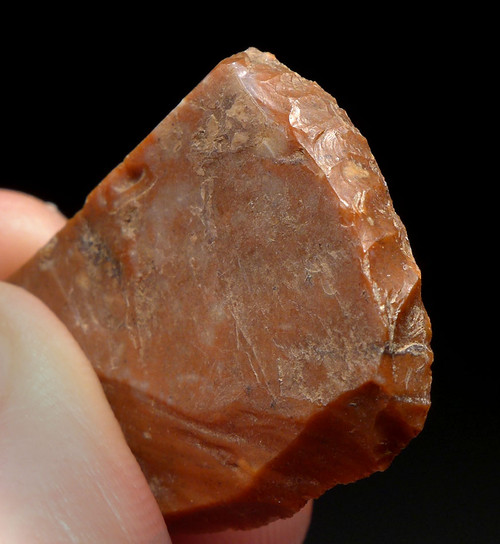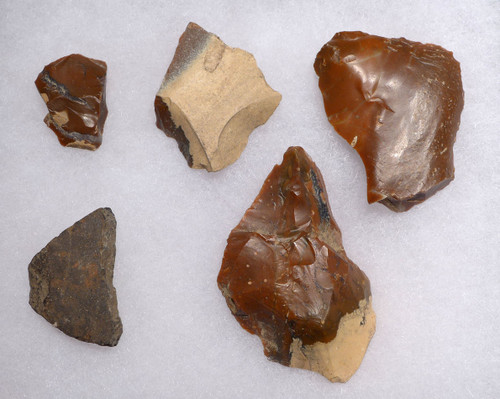Product Description
This is THE ULTIMATE 7 piece collection of RARE Neolithic artifacts that were found in Hungary. The tools from this site were made out of red and white radiolarite mined from a prehistoric mining site in Hungary dating back thousands of years ago. They are from an early Neolithic site of the Linear Pottery Culture - Europe's FIRST farming peoples. Of the very limited number of pieces we acquired in a private collection, these were among the best with specimens of all of the rarest types included in this set. Those include a used up tool core and a rare blade tool core (the two loose pieces not in the display case), a bone from a butchered animal, pottery fragment and various masterfully flaked tools that are complete with no damage.
These tools were fashioned by Europeans of the first farming and stock-herding society in North Central Europe. The site was a former farming settlement over 7000 years old and was rich in stone tools, pottery and animal remains from slaughter by the prehistoric inhabitants.
Acquired from an old Dutch private collection, we have only a few sets of these rare Neolithic tools to offer and will not be able to secure any more once sold. Being of such a rare and beautiful gem-grade lithic material, and coming from an uncommon Neolithic geographic location, makes a set like this especially desirable for collectors looking for unusual additions to their collection. An excellent opportunity to acquire a genuine stone tool artifact set from some of the world's first farming peoples in Europe!
SEE MORE AND LEARN ABOUT EUROPEAN NEOLITHIC TOOLS
HISTORY
The Early Neolithic mines in Veszprem were valued for the beautiful radiolarite which is unquestionably one of the most visually attractive raw materials to be found in Central Europe. Within Central Hungary it is one of the few sources of higher quality material. Local mining began in the Paleolithic, although very few sites from this era are know in the region. The first period with intensive use in the region and further away, is the Early Neolithic Linear Pottery Culture (Linearbandkeramik or LBK).
The earliest food-producing communities to appear on the North European Plain were those of the Linear Pottery Culture, which had also colonized the loess belt across central Europe between 5400 and 5000 B.C.. This cultural horizon spread rapidly over large parts of Central and Western Europe during the middle of the sixth millennium B.C., taking with it some of the raw materials from its region of origin in Hungary. There are vast areas in which Linear Pottery settlements have not yet been found.
Permanent settlement is an important feature of these early agriculturalist societies, often providing clear evidence of plant and animal domestication. These peoples built massive timber longhouses for shelter demonstrating the technological advances made during the early Neolithic. Artifacts are often found in or around these dwellings, notably figurines, decorated pottery, carved bone and stone tools.
The ceramics, flint tools, and ground stone tools found on the Linear Pottery sites of the North European Plain are essentially similar to those found elsewhere in east-central Europe. Unlike the large Linear Pottery sites of the loess belt, substantial longhouses have not been found in the lowlands. Instead, most of the lowland Linear Pottery sites are relatively small collections of shallow pits. The pits often have dense concentrations of refuse with relatively large shards and many reconstructable vessels. All the same, they do not appear to represent the same level of commitment to particular settlement locations as do the longhouse settlements of the loess belt.
 US DOLLAR
US DOLLAR
 EURO
EURO
 AUSTRALIAN DOLLAR
AUSTRALIAN DOLLAR
 CANADIAN DOLLAR
CANADIAN DOLLAR
 POUND STERLING
POUND STERLING

